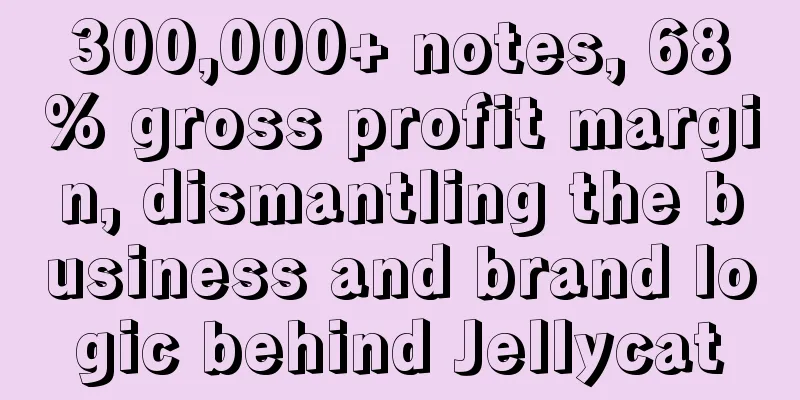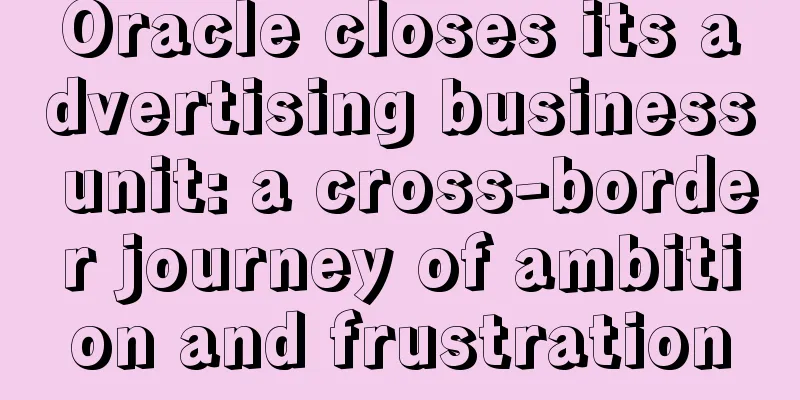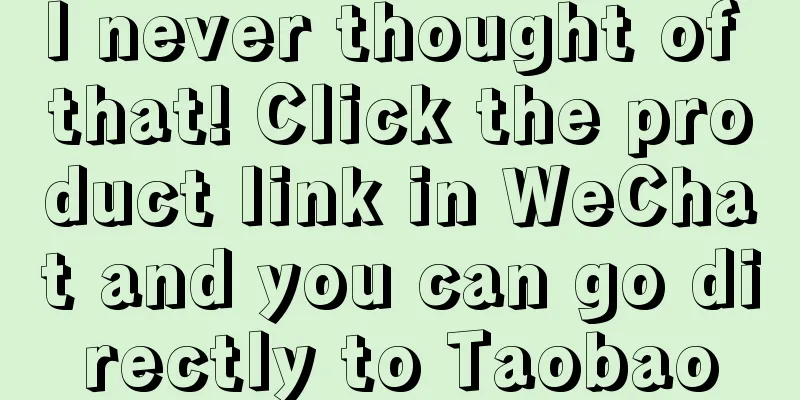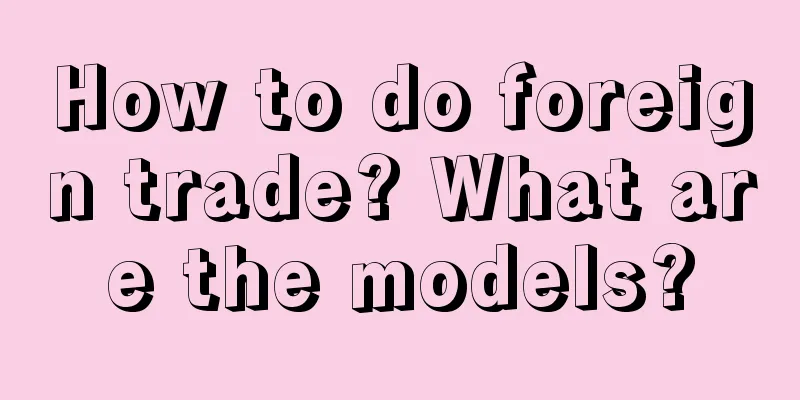How to use your product’s “hot nickname” to save you 70% of advertising costs?

The brands of this generation have also secretly put a lot of thought into the names of their products. Let's take a look at the nicknames of different brands:
Obviously, giving products a memorable nickname has become a conspiracy among brands, consumers and e-commerce companies because it is simple, straightforward, humorous, and easy to spread. Why are brands keen on creating nicknames? Next, I will talk about my views from four dimensions. 1. Brand asset dimension: creating a unique brand super symbolThe current market is difficult to operate! What is the difficulty? In the final analysis, it is homogeneity! Products are seriously homogeneous! In this case, how can consumers choose you and remember you? At this time, a nickname that is symbolic and easy to remember shows a unique advantage. For example, the "blue box" mentioned above. This is a new brand founded in 2019. As a fledgling new mattress brand, it is difficult for Blue Box to educate the market, and it does not have the capital to compete head-on with big brands. Therefore, in the misaligned competition with giants such as De Rucci and Xilinmen, Blue Box innovatively compressed and rolled up the heavy mattress and put it into a box less than half a cubic meter. It also tapped into the pain point of consumers who were afraid of trouble and launched the core selling point of "100-day free trial, full refund if not satisfied". At the same time, in order to penetrate consumers' minds more quickly, they chose a fun yet distinctive name "Blue Box" based on the brand and product features. The blue box is both the brand name and the product name; it is both a boxed mattress and the brand color, perfectly combining the product selling point, brand memory and brand spirit. Later, Blue Box launched a product called “Little Blue Pad” for different scenarios, which became the store’s No. 1 best-selling item on Tmall. Wonderlab’s ultimate large items, “Little Blue Bottle” and “Little Fat Bottle”, also have a similar purpose. The interesting appearance design and playful nickname not only improve the product's "picture-making rate" but also satisfy consumers' desire to share. To quote a sentence that Mr. Liu Wei shared with our Black Gold Member Community before: You have to make your super product readable by consumers’ No. 1 product, No. 2 product, and No. 3 product. The "blue box" and wonderlab "little fat bottle" are readable and recognizable to consumers, and occupy a product name, which is equivalent to occupying an entry and a label on social media, thereby creating a super value anchor and super symbol for the brand, thereby reducing the brand's memory cost and communication cost. 2. Personalization Dimension: Make Boring Products SoulfulBeauty brands can be said to be the originators of giving nicknames to products. Open the L'Oreal Tmall flagship store and you will find that various nicknames are standard for almost every single product: Purple Iron, Little Honey Pot, Space Bottle, Zero Cream, Black Fatty, Little Black Tube... There are also Shiseido Red Waist, OLAY Little White Bottle, Estee Lauder Little Brown Bottle, Helena Black Bandage... Brand owners have put a lot of effort into the product appearance and nicknames, making the product effects as external, visible and tangible as possible, so as to achieve self-propagation. The most typical ones are SK2's Ex-Boyfriend Mask and Shiseido's "Tsundere Essence" (now Red Waist). Compared to other skin care products with untouchable selling points such as "skin activation" and "youth", Ex-Boyfriend seems more flesh and blood. On the one hand, it gives the product a "personality" that is fresh and emotional, and is no longer as cold and difficult to approach as a chemical name. On the other hand, facing the existing market foundation and trend in the fierce skin care market, a nickname also saves the long process of educating the market. At the same time, the classic product name may also be accumulated into long-term brand assets and industry assets. 3. Communication Dimension: One Word is Worth a Hundred SentencesA distinctive product nickname can often have a communication effect that is as effective as a hundred words and as effective as a little effort. Take several underwear brands as examples:
While other underwear emphasizes comfort as a selling point, NEIWAI directly uses a cloud underwear to compare softness and comfort; Ubras also brought a small cool underwear in the summer; after launching the jelly strip underwear that is said to be "as if nothing is on the body", Sujiliangpin launched a new foundation underwear in autumn and winter; Bananain has even taken a different approach and created the concept of "thermal leather", where people wear thermal leather instead of autumn clothes, using technological patents to interpret its ambition to "redesign basic styles"; at the same time, the brand has also launched a "one-kilometer" cotton home clothes, breaking the boundary between home clothes and outdoor clothes. This rhetorical device, known as analogy in literary creation, is more vivid and intuitive by simply associating a scene rather than using data, packaging, raw materials, and efficacy to attract consumers in an overly rational way. What does this tell us? To create product differentiation features that consumers can perceive, rather than requiring consumers to repeatedly research on their own, the cost of consumer purchase decisions will be greatly reduced. Let’s look at another phenomenal case. How would you describe a pair of shoes as comfortable to wear? In 2021, the product "slippers that feel like stepping on shit" suddenly became popular. It attracted a group of consumers who actively searched on e-commerce platforms out of curiosity. You may not imagine that this noun with some flavor has opened up a tens of billions of market for the footwear industry, from summer slippers to winter cotton slippers. This kind of concept creation is to fully externalize the product, allowing consumers to have very rich imaginations of the effects, and what they hear is what they get, which greatly reduces the cost of product explanation and market education. 4. Interactive Dimension: Involve consumers in creating and playing with memesI mentioned in the previous article that in the process of creating products, we need to think about the pain points and scenarios of the products and establish future marketing language, which is to "inject marketing from product development", which also includes the pre-positioning of the product name. For example, in addition to the official customized product names, many brands’ product nicknames or brand names also come from wild co-creation with consumers. For example, before the Zero Point Cream was launched on the market, 60 consumers were asked to submit six nicknames, including Frozen Age Cream, Little Fat Purple, Milk Frozen Cream, and White + Black Cream. There is also the aforementioned Shiseido's "Tsundere Essence", which was born out of a 100,000 yuan reward on Weibo and is the nickname given to the "Corneo Activating Essence". Another type is the creation and playing of memes by consumers. Self-deprecation is a reverse grass-planting technique that is extremely effective. For example, NetEase Cloud Music's "Net Depression Cloud", Bilibili's "Small Broken Station", Sina's "Zhalang", and Coca-Cola's "Happy Fat House Water" have all invisibly narrowed the distance between the platform and users. There is also the well-known McDonald's. In the United States, it was not allowed to continue using its original name. In the Chinese market, it reversed the brand image and nicknamed itself "Golden Arches". It was originally just a self-deprecating joke by the brand, but it unexpectedly inspired consumers to make fun of it, and this low-brow "nickname" began to spread across the entire network. It can be said that the product nickname is one of the ways of communication between the product and the consumer, and it is also the link for the product to establish a certain cognitive relationship with the consumer. So how do you choose a suitable product nickname? Finally, let me give you a brief summary. Brands basically follow the "four routines" when choosing product names. First, it must be able to release emotional value. Second, it is simple, catchy, easy to remember, and the cost of dissemination is low enough. Third, the product nickname should match the value of user needs and leave room for imagination Fourth, being able to become a popular search term is not only about grabbing traffic, but also about competing for minds. Does your product have any interesting "nicknames"? Author: Sister Mulan Source public account: Mulanjie (ID: mulanjie-) |
>>: Getting Marketing Done: User Interaction Bus
Recommend
Watch a drama, and your loved ones and friends have to pay extra
In the era of digital entertainment, we are increa...
Golden sentences from copywriting, beautiful haiku
Different copywriting can give people different fe...
Is it necessary to repeat Amazon keywords? What should I pay attention to when using Amazon keywords?
There is one course that Amazon merchants must lea...
2023 Tik Tok content ecosystem: “Newcomers” are king
The author of this article shared several Douyin “...
What accelerator do I use to register a Google account? Which VPN can access Google Play?
Google account is an important tool for users. It ...
Can I open a store with an Amazon individual business license? How to do well on Amazon?
Amazon, like AliExpress, is a cross-border e-comme...
What are the trends and opportunities for video accounts in 2023?
At the 2023 WeChat Open Class, the Video Account t...
How to do cross-border e-commerce at home? What are the requirements?
Cross-border e-commerce is now a very popular form...
Douyin, Kuaishou, B2B and Weibo are all very popular. Which one is better at social media entertainment marketing?
In the contemporary era of TV dramas, the main bat...
What is the difference between an eBay personal account and a business account?
On eBay, personal accounts and business accounts a...
To keep workers from breaking down, they must rely on the emotional value of ChatGPT
Nowadays, artificial intelligence is developing ra...
Chengdu Disney's popularity revealed: a new chapter in Internet marketing based on sincere emotions
Recently, a rapper named Nomi unexpectedly became ...
What is the process of joining TradeKey? What do you mainly sell?
Today, I will introduce you to the content of open...
How to quickly layout and detonate the video account, this is the best answer
In this digital age, video accounts, as an emergin...
Top 10 predictions for China's Internet in 2023
Under the epidemic, the uncertainty of the industr...









